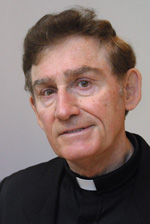The lyrics of songwriter John Lennon — “Those were the days, my friend, I never thought they would end” — remind me of my priesthood, a lifestyle I thought would never end, but it did! What happened?
Decades ago, many priests spoke English, and their parents still spoke their native language. Even though they and their parents held on to their culture, most became enculturated into an America way of life.
Today, many parents of our international priests remain in their native country and English is not the first language of their sons, nor have some priests successfully enculturated into our culture.
In the 1980s, bishops praised the enrichment that new cultures bring to our church. Today, they are voicing concern over international priests having difficulty in becoming an integral part of their presbyterates.
A second area of change is priests being ordained and then just a few years later becoming pastors of multiple parishes. Not long ago, rectories contained several priests and their ministry revolved solely around the parish. Today’s priest is more likely to be a circuit rider rather than living the model of stability in which his community is one parish and its parishioners.
[hotblock]
A third area of concern is the ordination of older men, whereas in decades past, the average age of priests was 25. It is true that older men are often more conversant with worldly matters, which is an asset in communicating with parishioners. On the other hand, they create an older priesthood. With age comes wisdom, but it often shortens one’s energy level and can cause inflexibility.
A fourth concern is a growing shortage of priests. This is causing some dioceses to ask retired priests to come out of retirement and fill in where needed. In some cases, this is causing the closing of parishes.
Although today’s priesthood isn’t the same as before, there’s no reason for alarm about an era ending in which the priesthood was larger, more homogeneous and younger. There is the motto: “In unity there is strength.”
If we take a closer look at our church and go beyond its priesthood solely, we find an exciting unity giving it renewed strength. A new corps of deacons has joined our priests, as have well-educated lay ecclesial ministers.
Women now have positions in diocesan centers that once were held by priests, giving diocesan life a greater balance. And wherever we look, we find lay volunteers who are the backbone of the parish.
We truly live in a new era in which we can sing, “These are the days of new, I hope they never end.”
PREVIOUS: Making violence ho hum: The NFL as Exhibit A
NEXT: Get the go-ahead from Congress before another war




Share this story